

 Culture & Adventure
Culture & Adventure


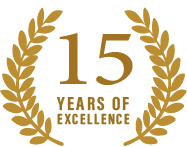
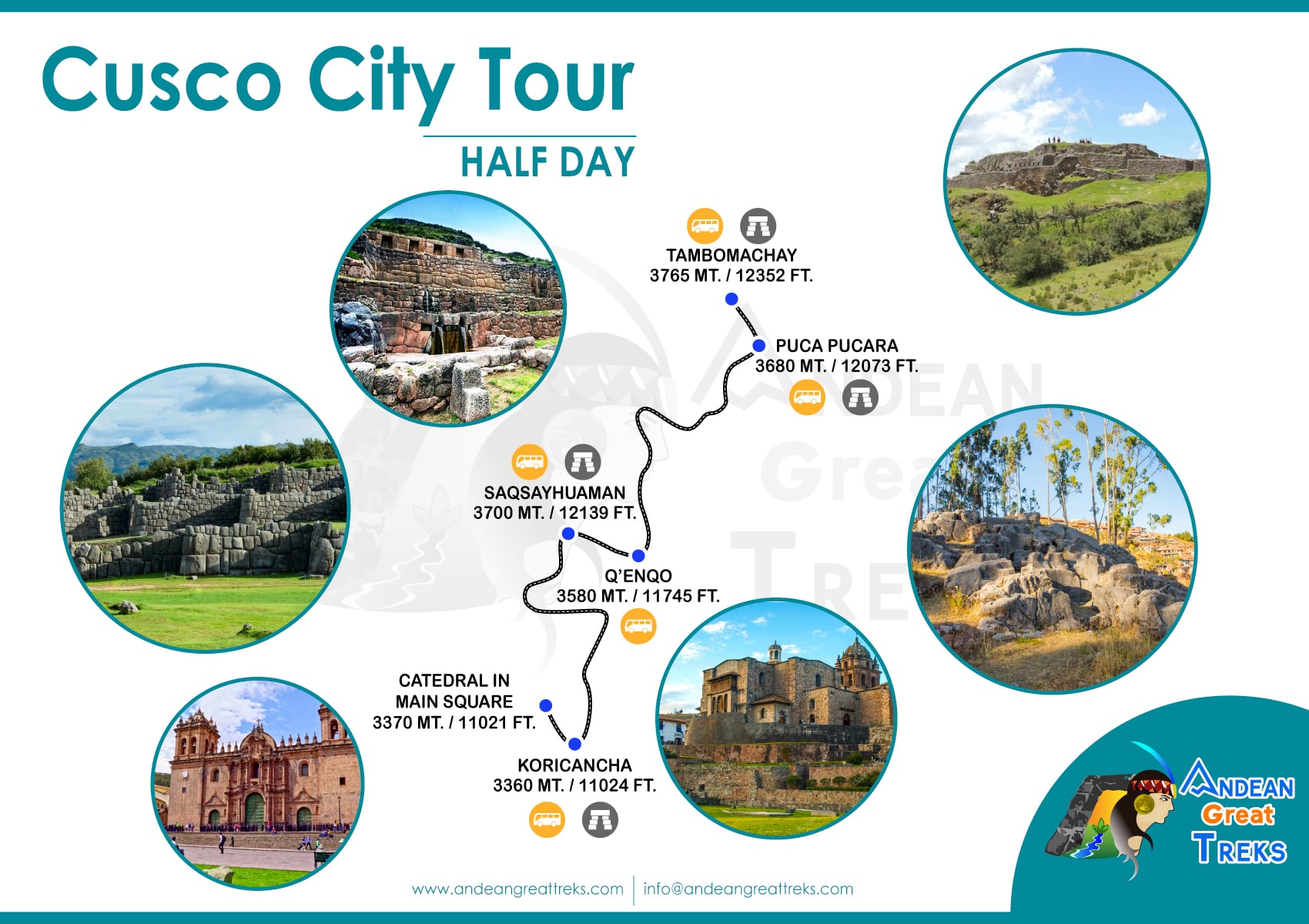 trip overview
included
trip highlights
activities
accommodations
itinerary
packing list
faq
essential trip information
best season to travel
price & availability
Reserve Online
trip overview
included
trip highlights
activities
accommodations
itinerary
packing list
faq
essential trip information
best season to travel
price & availability
Reserve Online
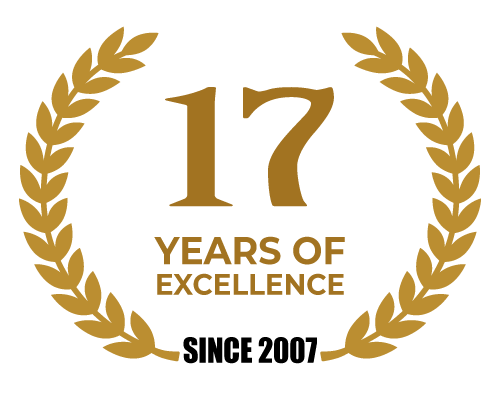 CREATING AUTHENTIC TOURS IN PERU
CREATING AUTHENTIC TOURS IN PERU

When people think of the ceremonial city of the Inca Empire, Machu Picchu immediately comes to mind. But the city of Cusco has much more to offer. So, you may wonder why visit Cusco city tour?.
The majestic and soaring city of Cusco offers not only the best jewel of Peru, Machu Picchu, but also ancient churches, temples, and more archaeological ruins. So, the city tour in Cusco is, without a doubt, one of the most fascinating, educational, and enjoyable activities to do as part of your vacation in Peru. A Cusco city tour will last approximately half a day. You can do it during your first day in Cusco, as long as you are in the city before 11 a.m. Another good option is to take the first day to rest in the different hotels in Cusco and acclimatize to the altitude.
Our transfer will visit you at your Hotel to transfer you to the starting point of your Tour, between 1:00 p.m. and 1:30 p.m. The tour begins in Qoricancha or Temple of the Sun, considered an indigenous religious sanctuary, where we will appreciate the fine work of lithic technology carried out by the Incas, with the highest level of cutting in hard stone without the possibility of inserting a sheet of paper and that Despite the earthquakes, they remain stable to date. After the visit to Qoricancha we will board the bus that will take us to Sacsayhuaman located 3km away. from the city of Cusco, Sacsayhuaman offers us a panoramic view of the city of Cusco, Sacsayhuaman was built with large blocks of limestone weighing from 25 to 130 tons. Composed of three superimposed terraces in a serpentine way (zigzag).
We will also arrive at Qenqo, which means labyrinth, it is located one kilometer from Sacsayhuaman, it establishes a construction based on limestone rock that shows stone sculpture in 500 m2 accompanied by structures that according to historians were used for astronomical, religious and astronomical study. embalming and/or mummification.
Then we will know Puca Pucara: coming from two Quechua words that mean Puca (red) Pucara (fortress) “red fortress”, strategic place for control and surveillance of access and exit of the Imperial city of Cusco, which was used as a territorial border for divide the regions and establish the displacement regimes.
Finally we will visit Tambomachay: resting place, located 9 km from the city of Cusco, better known as the Inca Baths for the water sources, or also known as the waters of eternal youth for the flow of its waters that is constant. and offers us part of the Inca trail that goes from Cusco to Machupicchu. This city tour in the city of Cusco ends at approximately 6:30 p.m.
For the Cusco City Tour you must always carry a small backpack, in which to pack, a feather jacket, rain jacket. Also do not forget to bring sunscreen, and a wide-brimmed hat, since radiation is high in the Andes of Peru. The weather in Cusco is very changeable, in the mornings it can be sunny and in the evening it can rain.
 warm jackets
warm jackets
 Hydration bladder
Hydration bladder
 wool socks
wool socks
 camera
camera
 scarf
scarf
 first aid kit
first aid kit
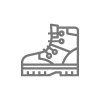 hiking shoes
hiking shoes
 Dry bags
Dry bags
 Trekking Poles
Trekking Poles
 sun cream
sun cream
 Snack
Snack
 sun hat
sun hat
 bathing suite
bathing suite
 rain coat
rain coat
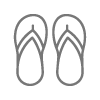 Sandals
Sandals
 insect repellent
insect repellent
 Passport
Passport
 Down Jackets
Down Jackets
 toilet paper
toilet paper
 daypack
daypack
 Wool cap
Wool cap
 head lamp
head lamp
 gloves
gloves
 sun glasses
sun glasses
 cap
cap
 extra cash
extra cash
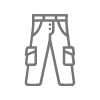 Trekking pants
Trekking pants
We know how important it is to be informed when visiting a country or region. In this case we try to clarify some doubts about the setting of this tour in Cusco. If you have any questions that are not in this section, let us know through our online chat or email.
The city of Cusco was the capital of the Incas. Important Inca constructions such as Sacsayhuaman, Coricancha, Qenqo, Puca Pucara and Tambomachay survive in its streets.
The City Tour Cusco visits these places as well as the city’s Cathedral. The name ‘Cuzco’ is considered ‘Navel of the world’ in Quechua, the language of the Incas.
Most tourists decide to take the Cusco city tour on the first day of their visit. Thus, they can better acclimatize to the high altitude of the Andes Mountains. The remaining days it is recommended to visit Machu Picchu, the Mountain of 7 Colors or other tourist attractions.
The City Tour of Cusco is a tour of the main tourist attractions of the city of Cusco, the ancient capital of the Incas, such as: Sacsayhuaman, Qoricancha, Qenqo, Puca Pucara and Tambomachay.
It offers a visit of 5 hours (half day). Some tour packages start in the morning (from 8 in the morning) and other tours start in the afternoon (from 1:30 in the afternoon).
It also includes the tour guide service, transportation to all places and entrance to all tourist attractions. Visitors can choose a shared or private service.
Coricancha and Santo Domingo Convent:
The Coricancha is one of the most important religious centers of the Inca empire. Its stone constructions have an even greater perfection than Machu Picchu. It was covered in gold and plants until before the Spanish conquest who built the Convent of Santo Domingo there. It is located two blocks from the Plaza de Armas. It houses paintings made by the artists of the so-called ‘Cusco School’. Both the Coricancha and the Santo Domingo Convent coexist harmoniously as a symbol of cultural syncretism.
Sacsayhuaman Fortress
Sacsayhuaman is one of the most enigmatic places of the Incas. There the tourist will be able to appreciate stones of up to nine meters of height and more than 120 tons. They all fit together with incredible precision. The Spanish believed that the enclosure was the work of the devil. There were fierce battles between Incas and Europeans. Today it is one of the most symbolic attractions of Cusco and Peru. There, every June 24, the famous ‘Fiesta del Sol’ is celebrated, also known as the Inti Raymi.
Archaeological site of Qenqo
Qenqo is located approximately 1 kilometer from Sacsayhuaman. It was an Inca ceremonial center whose buildings were dedicated to Mother Earth. There stands out a space called an amphitheater where the Incas had to place their dead in trapezoidal niches. Its biggest attraction is its underground labyrinths. Moreover, the word ‘Qenqo’ in the Quechua language (the language of the Incas) means ‘Labyrinth’.
Archaeological site of Puca Pucara
Puca Pucara is known as the ‘Red Fortress’ due to the pigmentation of this color in some of its stones as well as the reddish hue that the place acquires at sunset. It is believed that this enclosure served as a military post and a resting place for the Inca’s troops. Its main function was to take care of Tambomachay and Sacsayhuaman. There you can also see other structures such as fountains, aqueducts and other Inca constructions.
Tambomachay Archaeological Site
Tambomachay is one of the most beautiful archaeological sites. It is located approximately 400 meters from Puca Pucara. Its Inca constructions worship water with such perfection that even today, after several centuries, its canals continue to flow with water. The enclosure is also formed by a set of finely carved rocks as well as waterfalls, canals and aqueducts fed by springs. The scenic beauty of the enclosure harmonizes with the buildings and the murmur of the water.
Cusco City Tour will take approximately half a day. You can do it on your first day in Cusco, as long as you are in the city before 11 am. These are the times when you can do the City Tour:
The answer is yes, you should visit Cusco and its 4 ruins where the true history of the Incas is. The Sacasayhuaman fortress is perhaps the one that will surprise you the most, because you can still see the great stone walls, some are so large and weigh more than 100 tons. You can also enjoy a fabulous view of the city of Cusco from the Cristo Blanco viewpoint.
The city of Cusco is in the Peruvian Andes at an altitude of 3400 meters above sea level. Sacsayhuaman’s altitude is 3700 meters above sea level.
Acclimatization is essential at this altitude to prevent altitude sickness.
Therefore hiking to Sacsayhuaman is a perfect activity for your first day in Cusco. Some of the altitude sickness symptoms are dizziness, nausea, headache, shortness of breath, tiredness, etc.
Take your time in Cusco slowly, soak up in the atmosphere, acclimate. Luckily, Cusco offers plenty of things to do. And by the way, one of the best ways to deal with the altitude is to stay hydrated.
Carry a reusable water bottle to lower the plastic footprint and drink plenty of water throughout the day.
The traditional city tour of Cusco, in a group service, is normally made up of 15 to 20 people. With your guide in Spanish-English. In each tourist attraction, your local guide will provide you with as much information as possible, so that you feel amazed by the history of the Incas.
But if you prefer a private tour, we can also organize this type of excursion for you. The advantage of organizing a private tour is that you decide the starting time, and you can also have more time to take the best photos, with the help of your local guide.
If you feel more comfortable and these allow you to walk on rough terrain, you can take your trekking poles to the city tour of Cusco, just do not forget to have their tips covered with rubber bands. Because in Cusco in each archaeological site the park rangers are very strict with this rule, that is due to protect the historical monuments from possible wear or marks from the metal to the stones.
In this excursion of the city tour in Cusco, you do not walk too much, since most of the visit takes place in the tourist buses, and in the archaeological sites their lands are flat. Normally, each tourist attraction takes an average of 1 hour.
Even so, it is recommended to wear adequate footwear for an outdoor visit, since there will be gravel paths, grass, rocks.
The use of DRONES is regulated in Peru. If you want to make use of this flight device, you can do it without any inconvenience in the city of Cusco, we are talking about the square of Cusco, and its streets in the center of the city.
But in the archaeological attractions, it is totally prohibited, due to its declaration in its majority as historical monuments protected by Peruvian and international laws.
You can only use the DRONE if you have processed a special permit with the Ministry of Culture of Peru, at least one month in advance, and it must issue a letter of approval for the use of drones in the archaeological parks of Peru. Cusco.
If you plan to take a walk from the center of the city of Cusco to Sacsayhuaman, Quenqo and Tambomachay, it is possible. If you are in good physical condition, and acclimatized to the altitude, it takes about 1 hour. The path is all uphill combined with steps, it is recommended that you bring good hiking shoes, a water backpack and some snacks.
Sacsayhuaman is located north of Cusco, at 2 kilometers from the main square of Imperial city. It has an altitude of 3700 m.a.s.l. The most important, among archaeological sites in Cusco, receives the name of Sacsayhuaman. Its name is in Quechua and its meaning varies from “satisfied eagle” to “spotted eagle”, “spotted head”, and more. Today, the academics discuss its function, some say that Sacsayhuaman was a center destined to the cult of the lightning god (Illapa in the Quechua language), because of the shape of terrace distribution (zigzag similar to rays). Others indicate that Sacsayhuaman was a neighborhood of high-level people and others affirm that the complex was a military fortress, due to its location and structure (The last one is more accepted nowadays) Either way, its stone walls are well maintained, and along with the llama and alpaca grazing, you can admire arches, ceremonial altars, and a natural rock formation that looks like a children’s slide, which is also used by visitors as such. Sacsayhuaman is another good example of unique Inca architecture, each stone fits perfectly together, the tallest almost 9 meters high! The foundations are made with limestone from Yucay brought from more than 15 km away. In the lower part of El Sol Avenue near the local post office, not far from the main square, you can find a painted wall showing the fight of a brave Inca from one of the three towers of Sacsayhuaman. Unfortunately, only the foundations of the towers remain today.
It all begins in the Viracocha’s Inca age (15th century) when the population increased and raw materials lack demanded new territories to inhabit and usufruct. In this form, Viracocha entrusted the plan of expansion by the north to one of his sons, a young named Pachacutec. The north of Cusco adjoined with a Chanca’s Confederation zone (remains of towns that belonged to the extinct Wari culture and occupied central Andean of Peru). The Chancas were warrior people and looking for their expansion too. In 1438, the north people took advantage of the relative calm situation and began a battle against Inca, closing Cusco. Pachacutec reached a great victory and cleared the way for the expansion of the empire to the north. Years later, the victorious Inca Pachacutec (His father gave him the post of Inca ruler) decided to give the city new airs and the shape of a Puma, which was a symbol of power in the Inca culture. This is the reason why Sacsayhuaman was built as the head of the Puma. By the way, today you can see this puma shape on any Cusco tourist map. Back to topic, Sacsayhuaman was built during his reign between 1438 and 1471 AD. And it was his successors who built its massive wall. Of course, its construction lasted a century until the arrival of the Spanish. Where Sacsayhuaman played an important role in the final defeat of the Incas by the Spanish.
A Bloody Battle
Arrived in 1533, the Spanish entered Cusco Surroundings. It is believed that the fortress was used as a military base for the Inca Manco Capac during the fight with the Spanish conquistadors. After successfully defeating them for the first time, the conquerors attacked the fortress again, breaking the defenses of Sacsayhuaman against all odds, and, in this form, they were able to record a defeat over the Incas there. After the conquest, the Sacsayhuaman stones were reused to build the new churches and houses in the Historic Center of Cusco where the Spanish will live and impart their religious belief, Catholicism. Today the complex is a clear reflex of the skill of the Incas. This extensive complex is still standing and is a statement of the Inca power. Just as it reflects the sharp ability of the Inca architects. The complex was oriented to harmoniously combine the monumental structures with the surrounding landscape.
The Purpose Of Sacsayhuaman
As the lines above described, the function of Sacsayhuaman continues to be the subject of debate among many scholars. Some historians believe that Sacsayhuaman may have been a kind of sanctuary. This is because the complex contained quite a few temples. And among those temples stands out one dedicated to the Inca god Illapa (Ray). This is due to the distribution of the three principal terraces zigzag (Shape a Rays).
Its Role In The Past
There is also evidence showing that the enclosure was used as a kind of deposit. It is believed that the Incas kept food, ceramics, valuable textiles, precious metal tools, armor, and even weapons. Another theory affirms that Sacsayhuaman was an exclusive neighborhood of Inca’s elite. But what is known is that during the Spanish conquest, the military complex was one of the last bastions of the Incas. When Francisco Pizarro conquered Cusco, he sent his army to invade the fortress. They used ladders to climb the massive walls and horses to get closer. The campaign was successful and that was how the Spanish took the Inca fortress.
Its Role In Contemporary Times
In ancient Inca times, the site was used for many Inca ceremonies and this is still the case today. As in the case of Inti Raymi. Every year, on June 24, Cusco celebrates the Inti Raymi, or Festival of the Sun, in honor of the Inca god “Inti”; a theatrical performance in the middle of the Sacsayhuaman complex where you will witness a real interpretation of the stories about the heyday of the Incas and great performances of traditional dance and music.
Despite the Incas being an advanced civilization, they didn’t know the wheel. So they used a technique of hard-work movement, they situated the giant carved stones over oiled logs. These stones were tied down by thick ropes to several people who pulled them. In this form, the stones were sliding over the wooden reeds. Please note that the Incas brought these giant carved stones from stone quarries situated 32 kilometers far away. According to the chronicler Pedro Cieza de León, more than 20,000 people participated in the construction of Sacsayhuaman, and it lasts a century, approx. Its construction was slow, but the result endured over time to the present.
Sacsayhuaman’s design is based on the shape of the head of a puma, a sacred animal in Inca spirituality. It was the Inca Pachacutec who redesigned the city to give it the shape of a lying puma. And the space where the constructions are is particularly large. The architectural design of Sacsayhuaman has many styles. The fortress building contains both sacred constructions and residential buildings. You can also see some warehouses, aqueducts, roads, towers, and shrines. And the shape of the complex can closely resemble the style used in other sacred places such as Machu Picchu. Where it was sought that the buildings and the landscape would blend harmoniously.
Terraces, The Giant Walls
The main walls of Sacsayhuaman are built-in zigzag and with colossal stones. These stones can weigh between 90 and 125 tons and measure 2.5 meters wide and about 5 meters high. The Sacsayhuaman fortress has three different main walls, one behind the other. These walls extend for more than 540 meters and reach a height of about 18 meters. Even, anyone, who wants to visit Cusco, has the possibility of seeing the terraces from the main square of the city. Amazing! Each of the walls has up to 40 segments that allow an ideal defense against attackers. And its rounded corners plus the variety of interlocking shapes of its walls together with the slight inward inclination made this a perfect structure. It was ideal to survive the devastating and numerous earthquakes that occurred in Cusco in ancient times. The south side is bounded by a polished wall approximately 400 meters long. While in the west and east, they are limited by some platforms and walls.
Three terraces: The Fortress is made up of three large terraces built in a zigzag. The walls have 22 protruding angles on each level that represent the teeth of the puma.
The doors: Each of the guarded towers gates is located in the central part of the bastions. The gates are trapezoidal and each of the three doors has its name. They are named Ajawanapunku, T’iopunku and Wiracochapunku gates.
Three Guarded Towers: At the top of the Sacsayhuaman, three guarded towers were linked by a series of underground passages. There is only one small entrance on each of the terraces that give access to the towers on the hillside behind and to the interior buildings. In addition, the towers are called Paucarmarca, at the east of three towers. It has a square shape. In the center was Sayaqmarca, which was a circuit with water, while to the west was Muyucmarca, a round enclosure. While at the back of Sacsayhuaman you can see the other sites of importance. Like the Suchuna area, where there were more terraces, patios, and even a water supply system that had aqueducts.
Trono del Inca (Inca throne): This was a perfect carved stone (shape of a seat) located to one side of the fortress, where the Inca (sovereign of the whole empire) presided over parties, ceremonies, and sacrifices on important dates.
Warmi K’ajchana (Where women are raped): Its controversial name was assigned after 1934 when phallic cult objects were found there. The zone has natural formations of limestone rock carved to form passageways, niches, seat representation of staggered signs inter alia. Nowadays, the zone is still being researched.
Baños del Inca (Inca Baths): The zone is located northeast of Sacsayhuaman fortress and, it was used as a resting place for the Inca’s king and to worship the water (one of the most sacred elements in the Inca’s cosmology). It receives another name Tambomachay and has two aqueducts carved in stone that transport water flow all the year to a beautifully decorated pool.
Chincana (Tunnels): Among your list of most interesting things to do in Cusco, visiting the Chincana is a must-see pint there. These giant caves are located in the same Sacsayhuaman complex. There are two, one more small than the other one. These caves are the entrance of a sophisticated system of underground tunnels. Today, we don’t know their precedence (Inca or some most ancient culture) or the route that these have under Sacsayhuaman Complex. Nowadays, the small Chincana is open to visitors, you can enter there (we recommended with a tour guide), its exit is located a few meters beyond. In the case of the big one, entry is forbidden because lost people who tried to enter there many years ago.
El Rodadero (Suchuna): It is also another area worth visiting. Considered a natural park on the hillside. It was solidified lava flow from a thousand years ago. Its natural forms are similar to sea waves The Inca youth played there for hundreds of years, and today all visitors climb the Dorita stones and have fun.
One of the best things that Sacsayhuaman is the location. 2 kilometers from Cusco. So, its access is available in 4 forms:
City Tour: If you want to have a complete experience of Cusco, you have to take the City Tour. It is a traditional tour that includes a guide and transportation, the points to visit are the Santo Domingo Convent (Qoricancha, and the Sacsayhuamán archeological park (Includes Qenqo, Puka Pukara, and Tambomachay)
By walk: If you enjoy taking the experience on your own or doing a walking tour in Cusco, this option is for you. The walking begins from the main square, taking Cuesta del Almirante Street (to one side of Cathedral of Cusco), go straight and take Cordoba de Tucuman Street until reaching Plazoleta Nazarenas. From this square, turn left, take Pumacurco street and go straight 5 blocks up, you will reach the control booth of Sacsayhuaman. From this point, you will begin to climb the Sacsayhuaman hill slope until reaching the same Archaeological Park. The walk lasts 1-hour approx.
Sacsayhuaman is located around Cusco. In this form, its climate is cold and dry for the most part of the year. However, the complex is subdued by the weather of Imperial City, the dry season from April to November; heavy rays of sunshine and clear skies, with temperatures around 18ºC approx. will accompany you. On the other hand, the rainy season, from December to March is known for its heavy rains, cold breezes, cloudy skies, and temperatures that low down until 0ºC. Our recommendation? The dry season is perfect for you in case you want the perfect photos. Walking under the rain? This unique experience only can be enjoyed in the rainy season. The choice is yours.
If you are looking for tours in Cusco, you will find that each travel agency offers a city tour with various attractions in Cusco. You can book a half-day tour or just go on your own. In case you decide on the latter, it is important to know that you will need an entrance ticket (usually it is already included if you book through an agency) The so-called “tourist ticket” can be purchased at the COSITUC office (Avenida El Sol, Nr. 103) from Monday to Thursday from 8 a.m. to 5 p.m. or Saturday from 8:30 a.m. to 12:30 p.m.
You will notice that there are different tickets available, including different sites, which are:
Take advantage of the reasonable prices to experience a complete tour of the different museums in Cusco as well as the unique archaeological sites of the city. When you travel to Cusco it is a great idea to do a City tour of the Imperial city. For this, there are many variations from budget to luxury and group or private tours. Whichever way you decide to make your tour, you will surely visit the Sacsayhuaman Fortress. On the journey to the ruins, you will have wonderful views of the city, located in the valley below. Once you arrive, you will notice how the ruins are in an open space at the top of the valley, perfect for a nice quiet break on a nice sunny day.
Not far from Sacsayhuaman is Qenqo, the smallest but no less interesting of the four ruins. This temple presents the best examples of Inca carving found around Cusco. Looking at the giant rock, you can find artistic sculptures showing steps, seats, geometric reliefs, and even a cougar design. In the upper part are carved zigzag channels in which they have supposedly been used to pass Chica, the local corn beer. And that way they could make the most important decisions about the Empire. Inside the rock, you can still feel the spiritual energy coming from the altar.
Puca Pucara is believed to have once been a military fortress, but theorie also assume that it may have served only as a guard post to control people and goods entering and leaving the city. Its location offers a fascinating and beautiful panoramic view. From Puka Pukara you can easily walk to Tambomachay, also known as the “Baños del Inca”. Once there, you will see beautiful masonry with several niches and water still running through the old aqueducts. It was a bathing place for the nobility, who used the place for important ceremonies. With three stepped platforms, the first with a seat, the second with a natural spring, and the last believed to be the actual shower. The peaceful place was probably used for ritual baths. Among the many tours in Peru available to enjoy, those who visit these sites are unmissable.
Want an in-depth insight into this trip? Essential Trip Information provides everything you need to know about this adventure and more.
View Essential Trip InformationThe best time to visit Peru is during the dry season, between May and November, when the weather is dry and bright, with more frequent rainfall occurring between November and April.
 JANUARY
JANUARY
 FEBUARY
FEBUARY
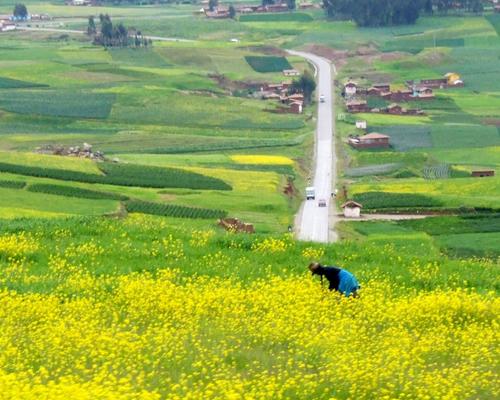 MARCH
MARCH
 APRIL
APRIL
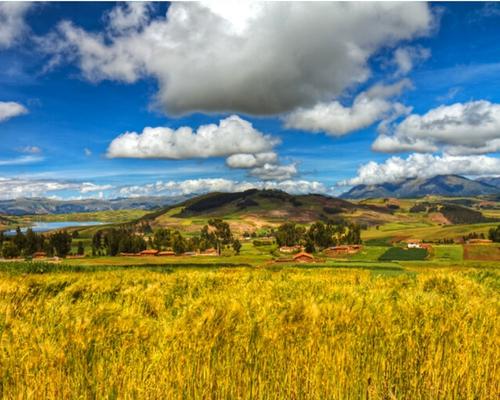 MAY
MAY
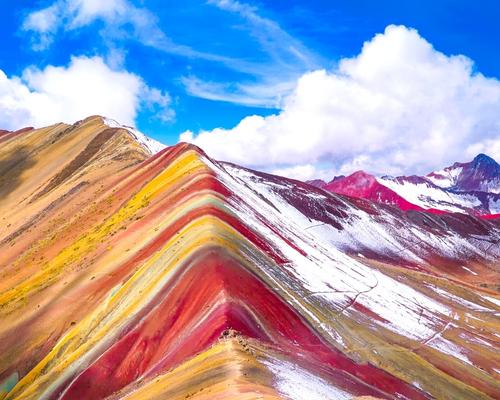 JUNE
JUNE
 JULY
JULY
 AUGUST
AUGUST
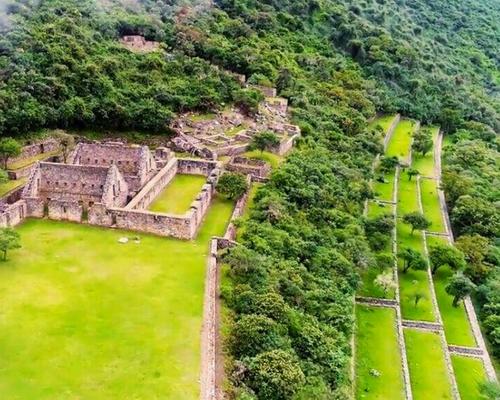 SEPTEMBER
SEPTEMBER
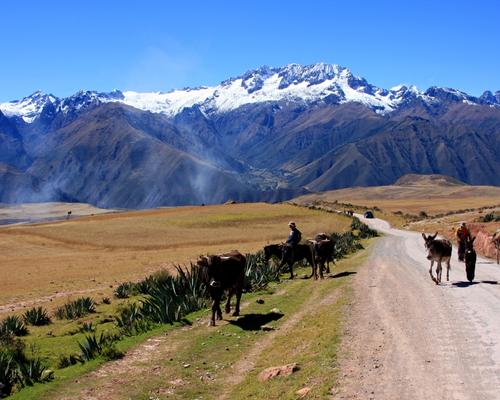 OCTOBER
OCTOBER
 NOVEMBER
NOVEMBER
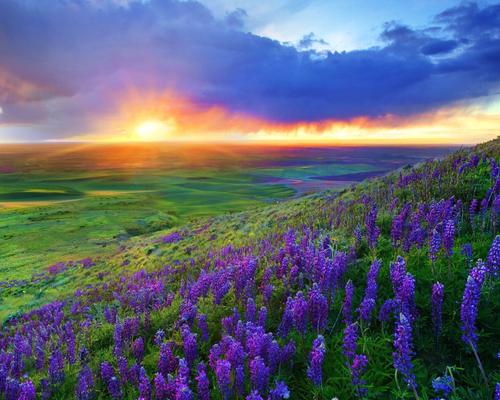 DECEMBER
DECEMBER
To book this tour, a minimum of $ 49 USD per person is required, the remaining balance will be paid upon arrival in Peru, at the Cusco office.
Any other additional information, please coordinate with your travel agent.

Nothing gets you closer to a country than walking through it, and we’ve got trips to suit walkers of all levels and interests.
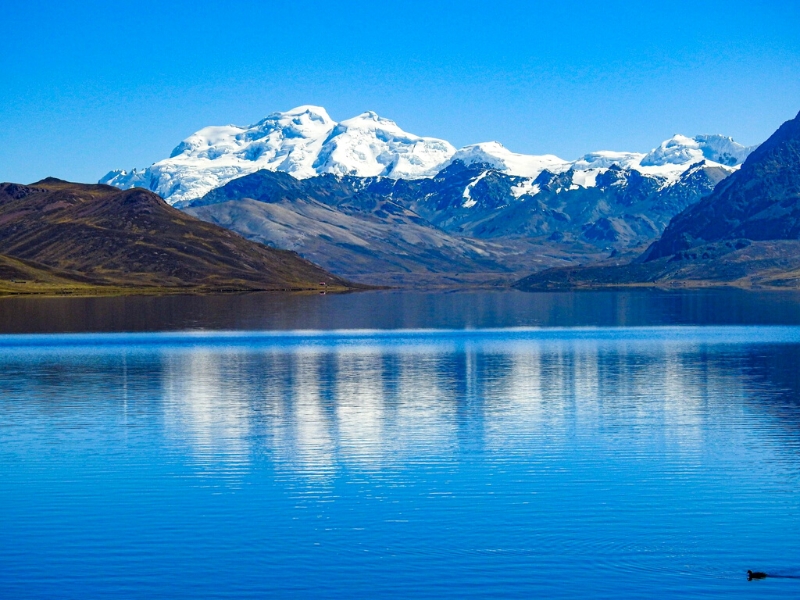
All our Walking trips are graded from ‘Easy’ through to ‘Challenging to Tough’. On our online trip itineraries you’ll find a chart showing the daily walk distances, timings and information on the route including the terrain, altitude. Generally, no specific training is needed but you might feel more comfortable if you’ve got out walking a few times in the lead-up to your trip.
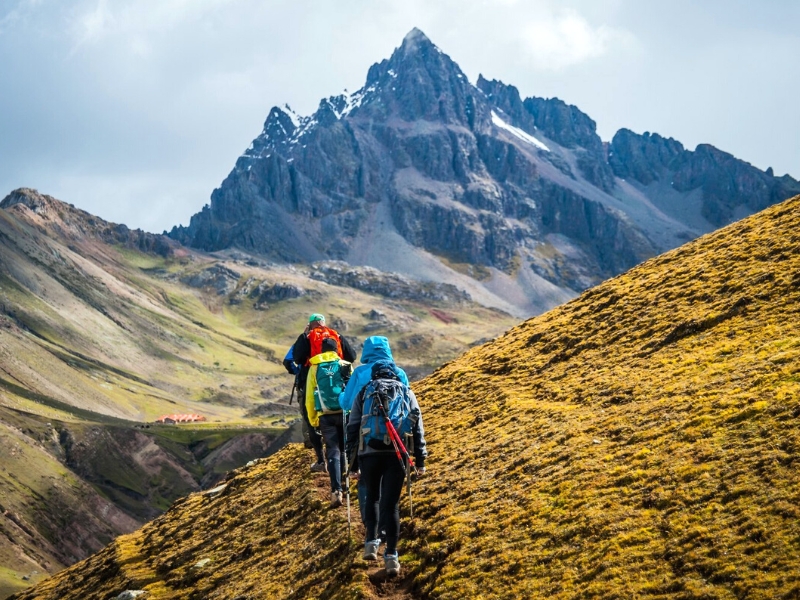
As with all our trips, every group is different but the ‘average’ group consists of roughly half couples and half solo travellers – all sharing a passion for exploring the world on foot. You’ll always have someone to keep you company along the route, but you don’t always have to walk together. Wherever possible your Andean Great Treks leader will allow everyone to walk at their own pace, regrouping regularly along the route.
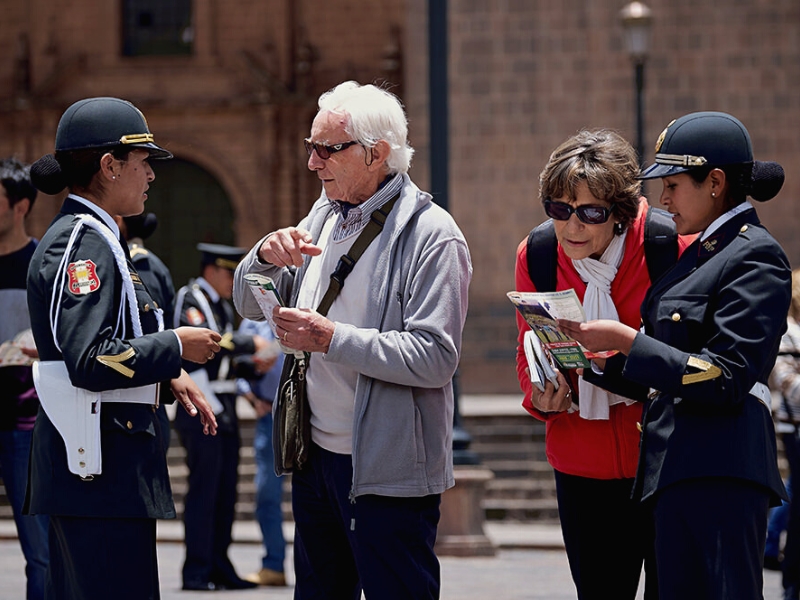
Like many other countries in developing destinations, the region’s beauty and uniqueness are countered by inequality and lack of investment. This has led to crime rates (mainly theft and scams) not being uncommon in the larger cities. We know this doesn’t sound very attractive, but it’s important to mention it regardless. Most experienced and well-traveled visitors will understand this well and not be too concerned. However, having said this, it is our duty to take care of you during your visit. That’s why we present you here with a few recommendations to be extra safe. Avoid walking alone at night on empty streets. Don’t flaunt valuables! If going for a walk or going on public transport, be sensible and avoid showing off expensive items such as expensive watches and jewelry. Be careful of pickpockets! Don’t leave your bags anywhere that doesn’t look safe, and make sure to take them with you.
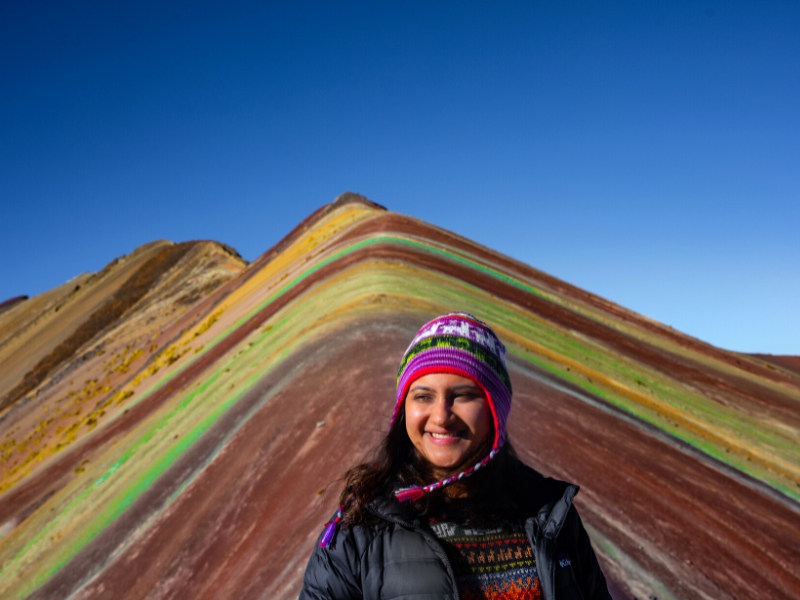
Soroche, or mountain sickness, is a reality for most people arriving in Cusco by plane from sea level and needs to be treated with respect. It’s vital to take it easy, not eating or drinking much on arrival, even sleeping a whole day just to assist acclimatization (coca tea is a good local remedy). After three days at this height most people have adjusted sufficiently to tackle moderate hikes at similar or lesser altitudes. Anyone considering hiking the major mountains around Cusco will need time to adjust again to their higher base camps.
If you do encounter altitude-related health problems, many hotels and restaurants have oxygen cylinders to help; alternatively, for serious cases, try call any of the clinics that are in Cusco, most of them have staff that speak English, for a greater facility in your attention it is recommended to have a travel insurance that covers medical expenses.
International flights to the capital city of Lima are plentiful but once there, you need to find a way to Cusco which is about 1100 km (684 miles) away. The quickest way to get to Cusco from Lima is to fly – it takes about 55 minutes. I don’t recommend traveling by bus because it takes about 24 hours – only do it if you intend to break the journey along the way, to visit other places.
Renting a car to travel from Lima to Cusco is not recommended. The roads are rough, and you could find yourself lost or face to face with one of the other dangers that come with traveling in unfamiliar territory.
The easiest way to explore the Sacred Valley from Cusco is on a guided full day tour that picks you up and drops you off from your hotel. The market in Pisac and Inca ruins in Ollantaytambo are the principal stops, though travelers with more time on their hands will find plenty more to see and do. It’s also possible to take a local bus or taxi into the Sacred Valley and do independent exploration.
Rainbow Mountain, or Vinicunca as it’s known by locals, has become a popular hike in the Cusco region. It’s possible to visit Rainbow Mountain in one (very long) day from Cusco or you can divide the trip into a two-day itinerary. While the hike isn’t very difficult and doesn’t have many steep inclines, Vinicunca is in a high elevation region (the highest part of the trail is 17,060 ft or 5,200 m) and you should spend time acclimating before starting the hike.
We are not afraid to say that Cusco is a place where every traveler ends up at least once during the trip around Peru, and it is hard to tell what is the right length of stay.
If your primary reason why to visit Cusco is to get to Machu Picchu, you still should spend here at least two days to acclimatize (despite the fact Machu Picchu is at a lower elevation than Cusco, some people still suffer from altitude sickness), and during this time you can explore the city and Sacred Valley.
From our personal experience, we think that the longer you can stay in Cusco it is better. Some travelers with limited time even revolve their entire itinerary around Cusco – this only proves how rich the city is in terms of sightseeing, architecture, and activities.
Cusco has so many things to see and do, not only within the city limits but mostly outside, that it is not a problem to spend here weeks. If you are flexible, sit down, and write down all one-day and multi-day treks you would like to do from Cusco, and you should get the optimal number of days for you.
There are so many things to see and do in Cusco and its surroundings that the city certainly deserves more than one day of your time.
To enjoy your days in Cusco the most, it is essential to choose the right accommodation. The good news is that Cusco has a great network of hotels for every type of traveler, from cheap hostels to luxurious mansions. That’s why your only job is to find a hotel in a location that suits you the best.
We recommend staying close to Centro Historico unless you want to stay away from crowds. We’ve selected the three best hotels in Cusco, so feel free to get inspired.
In recent years, Peruvian cuisine has gained popularity in the world’s culinary landscape, but for the freshest (and most authentic) specialty dishes, Cusco will not disappoint. Most Peruvian dishes carry big flavor not seen in other Latin and South American fare. You may have already tried popular dishes like ceviche (a cold dish of fresh raw fish with spicy citrus flavors) or lomo saltado (stir fried beef with fries). If you’re feeling a bit more adventurous, try Cuy (roasted guinea pig – yes, the American household pet) or charbroiled alpaca (also known as llama). Other delicious traditional dishes include adobo (a pork stew with corn beer), tamales, choclo con queso (boiled corn with local cheese) and the vegetarian stew capchi de setas. As far as vegetables go, Peru produces more than 4,000 varieties of potato, so you’ll find many dishes centered on them like papas a la huancaina (boiled potatoes with a spicy cheese sauce) and causa (a potato casserole with a variety of meat). Other staple veggies include corn and avocados. If your mouth isn’t watering yet, check your pulse.
For a taste of traditional dishes, head to PACHAPAPA or the award-winning CHICHA (visitors and locals recommend getting reservations well in advance). Peruvian cuisine often mingles with Asian influences, inspired by the culture brought by indentured servants and immigrants who came to Peru dating back to the original Spanish rule in the country. For a sampling of the Asian/Peruvian fusion cuisine, visit LIMO. If you’re really looking to splurge on a fine dining experience, try MAP Cafe. Located in the courtyard of the Pre-Columbian Art Museum in a glass shipping container, the fare is more contemporary Peruvian cuisine. You can also kick-start your day with coffee and breakfast at Jack’s Cafe, which serves breakfast all day. Many of the most popular restaurants are centrally located near Plaza de Armas.
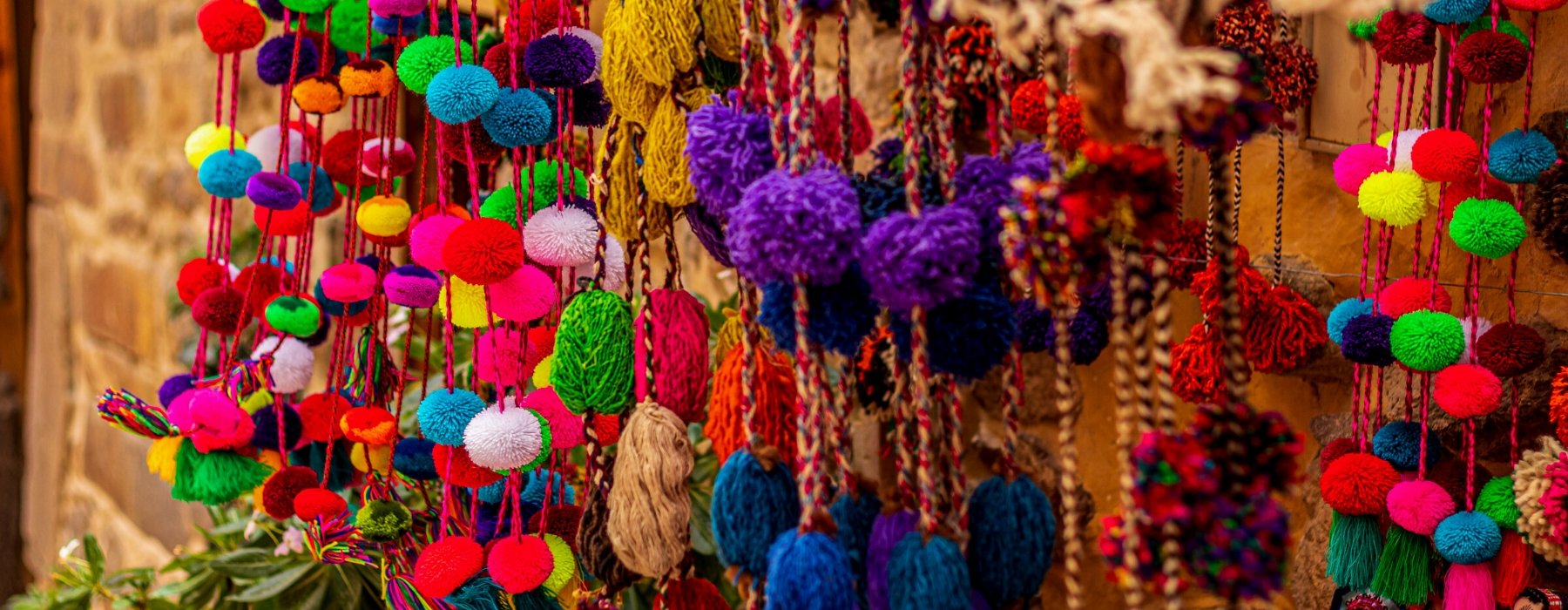
Every Andean Great Treks holiday has been thoughtfully planned and crafted by our specialists. They draw on their own extensive travel experience and the guidance and expertise of our local partners to create superb holidays. Our specialists are committed to making every aspect smooth and enjoyable; they genuinely want to ensure that the holidays they create leave you with wonderful lasting memories.
Every Andean Great Treks traveller is accompanied by an experienced tour guide, you will be immersed in Historic cities, ancient ruins and unfamiliar landscapes are all brought to life by our carefully selected local guides. They want to share their expertise and help you make your own discoveries too; their sole mission is to ensure you enjoy every moment.
Giving you the freedom to make your holiday even more memorable. We know how much our customers look forward to their holiday and we pride ourselves on the choice and flexibility that we offer to enhance every aspect of your experience. Whether it’s getting to the airport, upgrading your room or booking an additional excursion, we can help.

Our guides are the stars of the show; it is their unrivalled knowledge, passion and expertise that will transform your tour experience from good to truly extraordinary!
Because the have grown up in the area and know it like the back of their hand, so they can help you experience whichever aspects most interest you. They’re passionate about sharing their corner of the world with you, and as you explore together, they’ll open your eyes to the intricate details, provide background to enhance your understanding of what you’re seeing, and share stories that will bring everything to life.

“Your inspiration for a trip can be a single word or a highly evolved outline, but it’s the conversations we have that help us understand the experience you’re looking for. Meanwhile, I’m looking back on the time I spent at the destination.
‘The great thing about working with a specialist at Andean Great Treks is how they take your complete jumble of ideas and turn them into something absolutely spectacular.’
As you begin to share your ideas with your specialist, it will connect them immediately back to a time in their own travels. Conjuring a picture of the rest time they made that same discovery, reminding them how it felt.
Your specialist understands that, when the journey is right, it has the power to excite your emotions in the most profound ways after all, that was the effect on them.
They carry a treasure box of moments, captured over many journeys, into every suggestion they’ll share with you, as they ask you how you want to feel on your trip.

EXPERIENCES THAT CALL TO YOU
It’s what you do in a destination that helps bring it to life. It’s why we strive to choose experiences that help you connect to a place, absorbing a little of its complex character. Wherever your passions lie, we’ll recommend experiences that speak to you, and we’ll recommend the guide or local expert who’s most qualified to help you explore. Packing your holiday full of special experiences means some early starts and long days, but you can be sure that you’ll return home with many incredible memories! Read our Tours and check the Physical Ratings to see if the pace and activity levels are right for you.

STAYS WITH DIFFERENCE
We know that where you stay is a cherished part of your travels. So, we go to great lengths to find places to stay that exceed expectations, or go above and beyond the ordinary, whether in their character, hospitality, or location. Over the years, we’ve discovered the very best properties, trying and testing them, so we can choose the right one for you. We’ve nourished long-standing relationships with these establishments and the people who founded them, and we’ve stayed there many times often, we’ll even know which rooms have the best views (and reserve them for you).
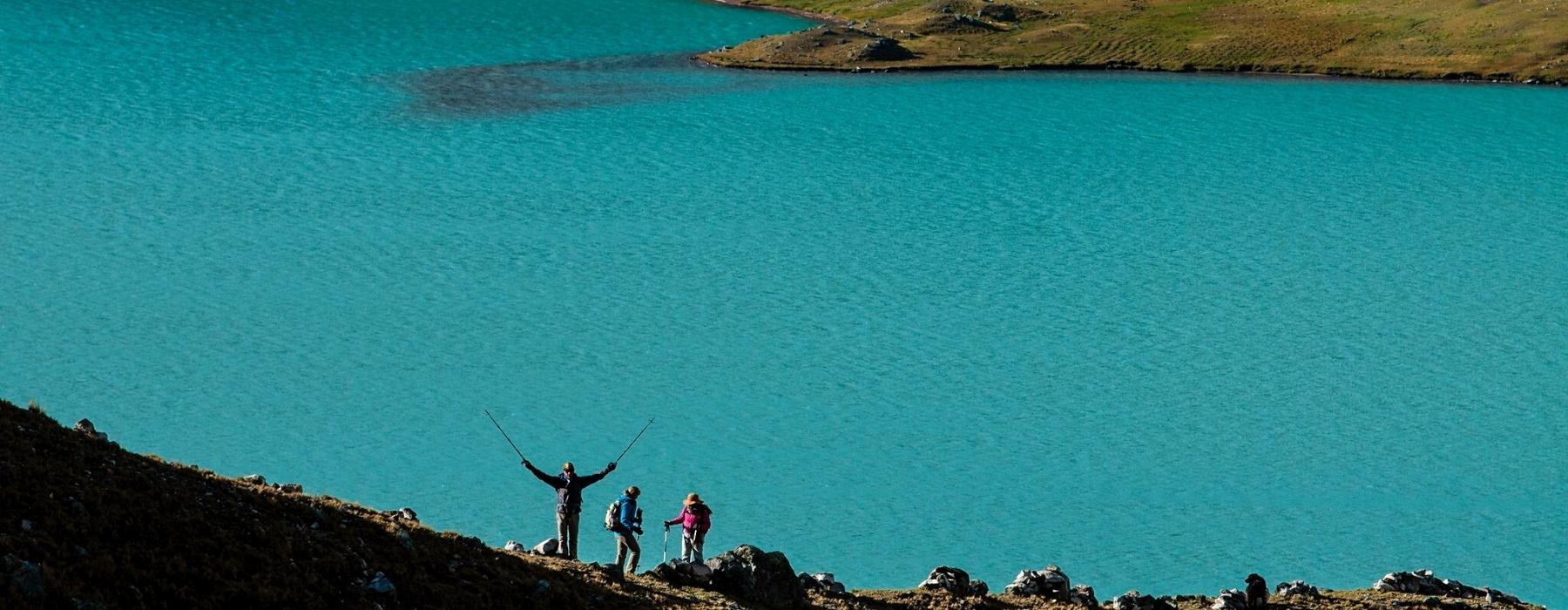
Our style of travel — authentic, thoughtful, and focused on building meaningful connections to the people and places you visit — is inherently respectful and considerate of the destinations we love. We design each aspect of your trip exactly as you want it, which includes its sustainability. That might mean choosing a train journey instead of a flight, staying at eco-friendly wildlife lodges, or opting for experiences that give back to the communities you’re visiting. The choice is yours.
Responsible travel has always been at the heart of what we do. First and foremost, because it gives you the best experience, but, also because it helps to preserve the communities and landscapes you visit. This isn’t new for us we collaborated with local communities and outside experts so we can grow to be better ambassadors.
The most authentic and interesting experiences often directly benefit the local people. We prefer to buy local products that are produced in the organic farms of the Sacred Valley, we also have alliances with local artisan organizations who provide us with souvenir items for our clients, your money directly benefits the local economy.
Our style of travel — authentic, thoughtful, and focused on building meaningful connections to the people and places you visit — is inherently respectful and considerate of the destinations we love. We design each aspect of your trip exactly as you want it, which includes its sustainability. That might mean choosing a train journey instead of a flight, staying at eco-friendly wildlife lodges, or opting for experiences that give back to the communities you’re visiting. The choice is yours.
Responsible travel has always been at the heart of what we do. First and foremost, because it gives you the best experience, but, also because it helps to preserve the communities and landscapes you visit. This isn’t new for us we collaborated with local communities and outside experts so we can grow to be better ambassadors.
The most authentic and interesting experiences often directly benefit the local people. We prefer to buy local products that are produced in the organic farms of the Sacred Valley, we also have alliances with local artisan organizations who provide us with souvenir items for our clients, your money directly benefits the local economy.
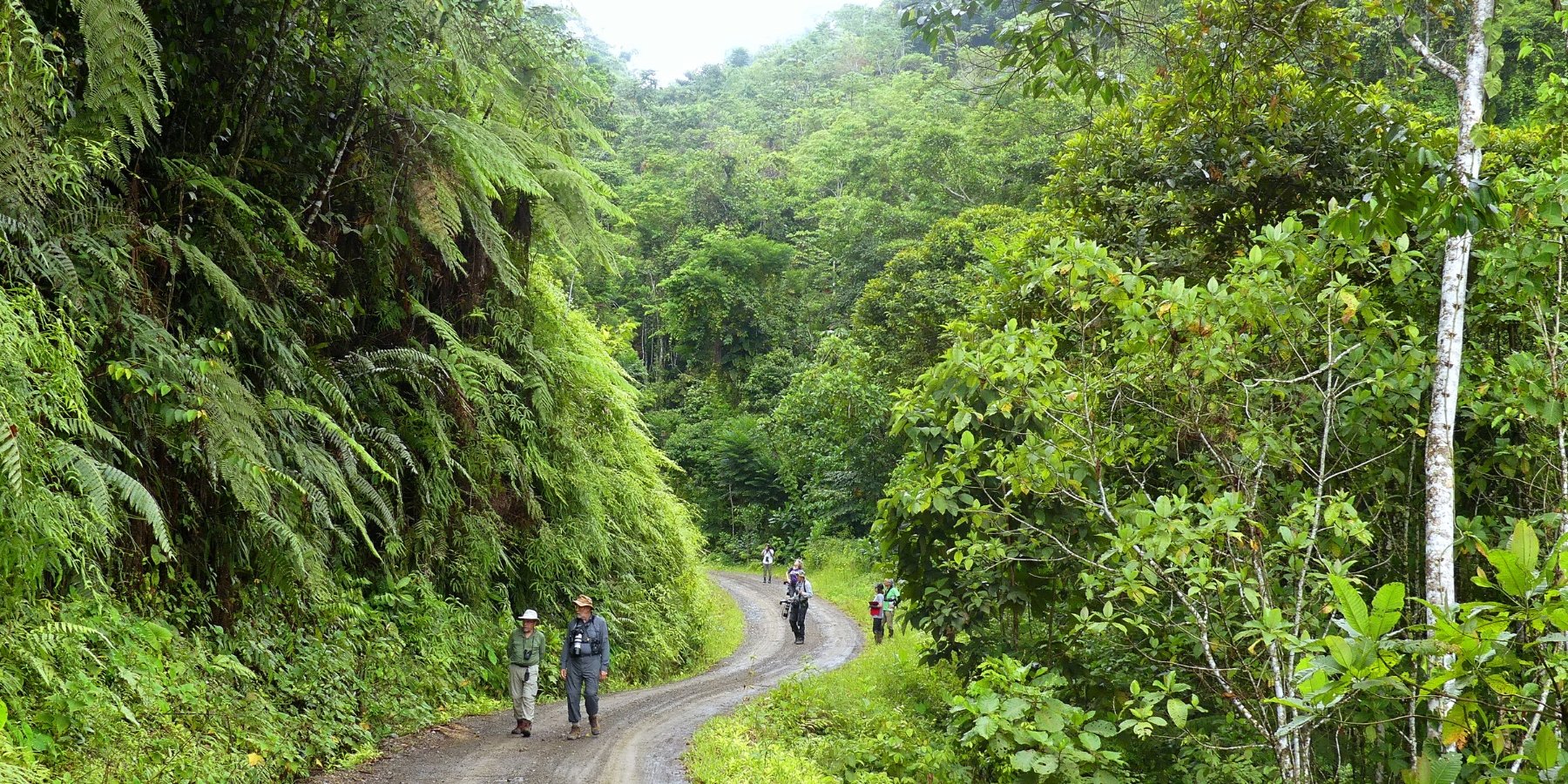
‘There’s a saying: we don’t inherit the Earth from our ancestors, we borrow it from our children. When we show you our country, this philosophy guides everything we do. It’s our responsibility to preserve the environment and wildlife, and support communities. That means using slower modes of transport, like cycling, employing local people, and working with communities who’ll benefit directly from your visit. This also gives you the best, most authentic impression of the places we want to share with you.
We prefer to buy local products in ecological bags, to avoid the use of plastic bags, likewise we teach the use of soaps and ecological products in each tour that we organize. We also work on reforestation projects with local communities who take care of landscape resources such as communal reserves, national parks.
‘There’s a saying: we don’t inherit the Earth from our ancestors, we borrow it from our children. When we show you our country, this philosophy guides everything we do. It’s our responsibility to preserve the environment and wildlife, and support communities. That means using slower modes of transport, like cycling, employing local people, and working with communities who’ll benefit directly from your visit. This also gives you the best, most authentic impression of the places we want to share with you.
We prefer to buy local products in ecological bags, to avoid the use of plastic bags, likewise we teach the use of soaps and ecological products in each tour that we organize. We also work on reforestation projects with local communities who take care of landscape resources such as communal reserves, national parks.
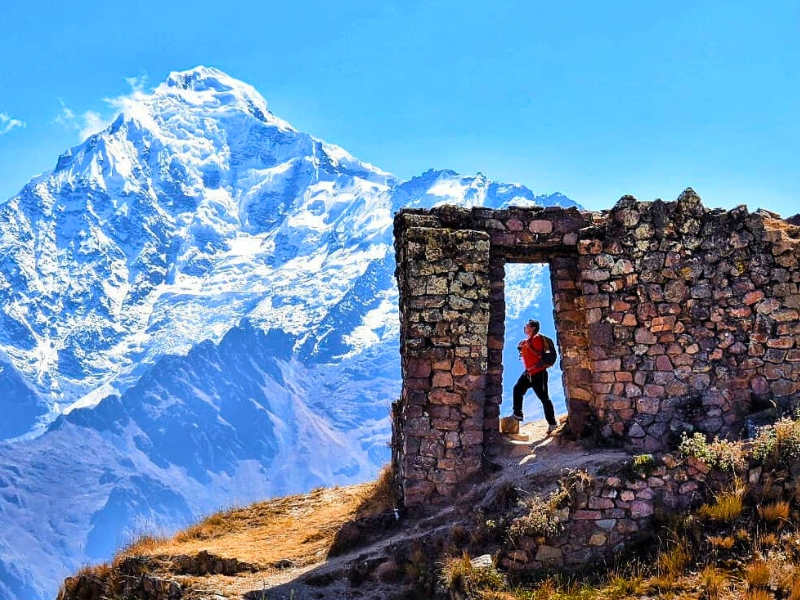
Visit the sacred gate of the Incas on the Cachichata mountain, from there you can enjoy beautiful views of the sacred valley of the Incas and its snow-capped peaks.
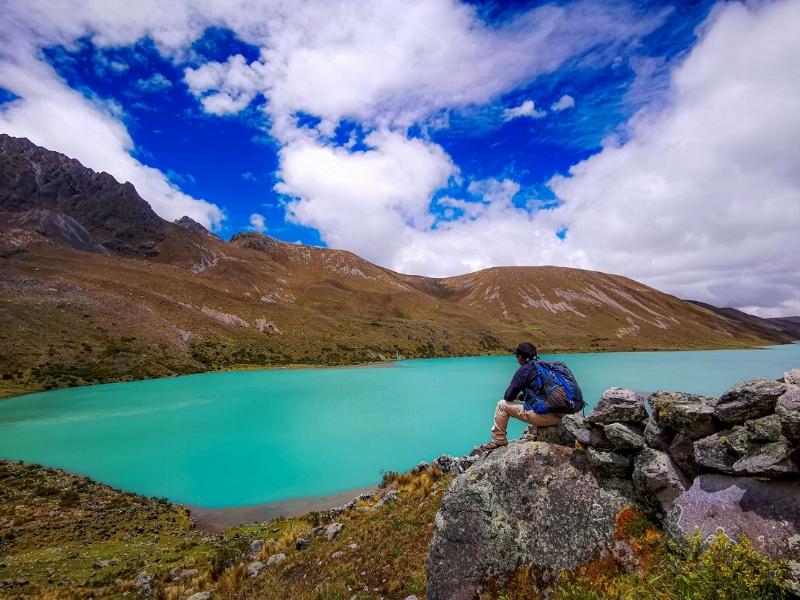
Singrenacocha turquoise Lake Day Hike is located about 3 hours away from Cusco City. This stunning lake offers up a great day trip option for those looking for amazing mountain views and gatorade blue water without much effort. The drive takes you right to the lake where you can walk small trails exploring different vantage points with the company of local farmers and their alpacas

On top of a mountain in Cusco, Peru, there is an enigmatic Inca fortress that very few know about. The place has an overwhelming landscape, where gigantic stone formations stand out and its beauty is one of the most spectacular in the Andean world.